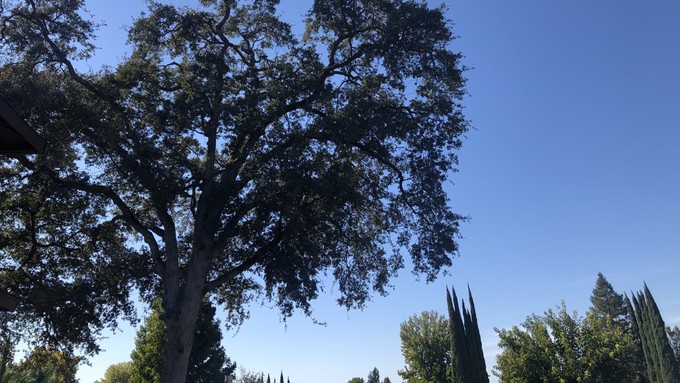
Now is the best time to plant trees in Sacramento; get some for free

Blue oaks like the one at left are popular drought-tolerant shade trees. Trees of all kinds help keep neighborhoods cool. Kathy Morrison
Shade: On a scorching summer day, it’s one of the most valuable assets for any home in the Sacramento region – and you can grow your own.
“It’s the difference between a livable summer and one that’s really stifling, not just uncomfortable but could threaten your life,” says Stephanie Robinson, communications and marketing manager for the Sacramento Tree Foundation. “If you lost a big shade tree recently, you really noticed the difference – especially this summer. You don’t realize until it’s gone how valuable shade is.”
Not only your own home is affected, she adds. “Shade trees keep your whole neighborhood cooler. Without trees, all that heat is absorbed by asphalt.”
Tree-lined streets lower the temperature of surrounding homes and improve the neighborhood’s quality of life, Robinson notes. “That’s why it’s one of the main priorities for our mission (at the foundation); plant more shade.”
SacTree volunteers tested their theories of shade tree impact on neighborhoods with a drive around Sacramento neighborhoods on a summer afternoon, Robinson says. “There was a 20-degree difference between the hottest and the shadiest neighborhoods at afternoon peak highs. That can be the difference between life and death for people without air conditioning.”
Now is the time to plan ahead and plant some shade. Fall is the best tree-planting season in the greater Sacramento area. While some trees have reputations as water hogs (specifically coastal redwoods), many other water-wise choices are available.
“If you’re re-doing your landscape, think trees first,” says Robinson. “It’s not just shade, but wildlife habitat. You can build trees into your water budget. It costs less than $3 a month to water a mature tree. A young tree costs only pennies. You can afford to invest in that shade.”
SacTree partners with the Sacramento Municipal Utility District (SMUD) to offer up to 10 free shade trees to customers. Since 1990, the program has planted more than 600,000 local trees. Details here: https://www.smud.org/en/Going-Green/Free-Shade-Trees
Participants contact SacTree and set up an appointment with a community forester. That program has expanded to include evergreens as well as trees that shade portions of a customer’s property other than their home.
“Shading landscape saves water because there’s less transpiration,” Robinson says. “There are many benefits of shade trees.”
Among the most popular water-wise shade trees for Sacramento landscapes are native oaks: Valley oak, interior live oak and blue oak.
“People love oaks,” says Robinson. “They’re sturdy, long-lived and (the deciduous varieties) offer a rainbow of fall color.”
Oaks take time to grow. A faster option is a zelkova; native to Japan, these trees can reach 60 feet in a hurry. “It’s a big, beautiful shade tree that grows fast,” Robinson says.
“Chinese pistache are still very popular, and the new cultivars are not as messy,” she adds. “Right now, people are very interested in trees that flower and support pollinators. The favorites are desert willow, vitex and strawberry trees.”
SacTree has many more suggestions in its “Shady 80,” its selection of best trees for Sacramento. This urban forest features dozens of water-wise choices: https://sactree.org/best-trees-for-sacramento/.
Comments
0 comments have been posted.Sacramento Digs Gardening to your inbox.
Sites We Like
Garden Checklist for week of July 21
Your garden needs you!
* Keep your vegetable garden watered, mulched and weeded. Water before 8 a.m. to reduce the chance of fungal infection and to conserve moisture.
* Feed vegetable plants bone meal, rock phosphate or other fertilizers high in phosphate to stimulate more blooms and fruiting. (But wait until daily high temperatures drop out of the 100s.)
* Don’t let tomatoes wilt or dry out completely. Give tomatoes a deep watering two to three times a week.
* Harvest vegetables promptly to encourage plants to produce more. Squash especially tends to grow rapidly in hot weather. Keep an eye on zucchini.
* Pinch back chrysanthemums for bushy plants and more flowers in September.
* Remove spent flowers from roses, daylilies and other bloomers as they finish flowering.
* Pinch off blooms from basil so the plant will grow more leaves.
* Cut back lavender after flowering to promote a second bloom.
* It's not too late to add a splash of color. Plant petunias, snapdragons, zinnias and marigolds.
* From seed, plant corn, pumpkins, radishes, winter squash and sunflowers.